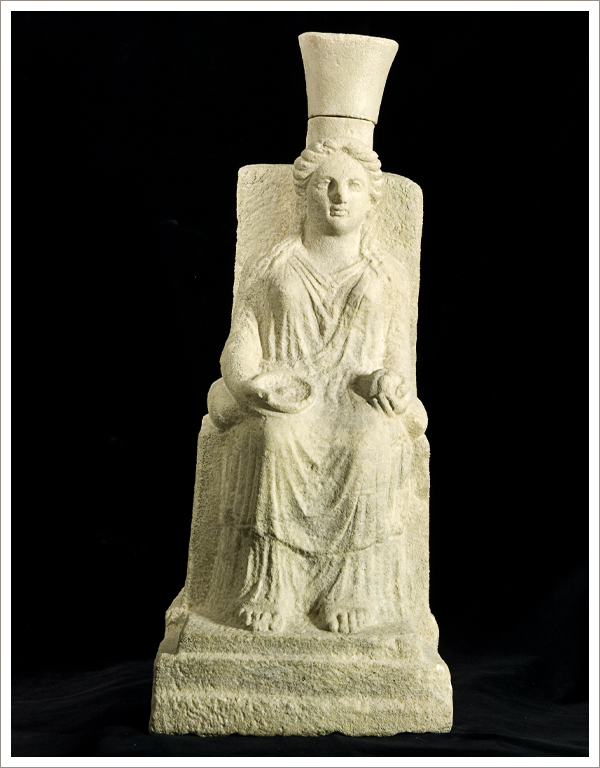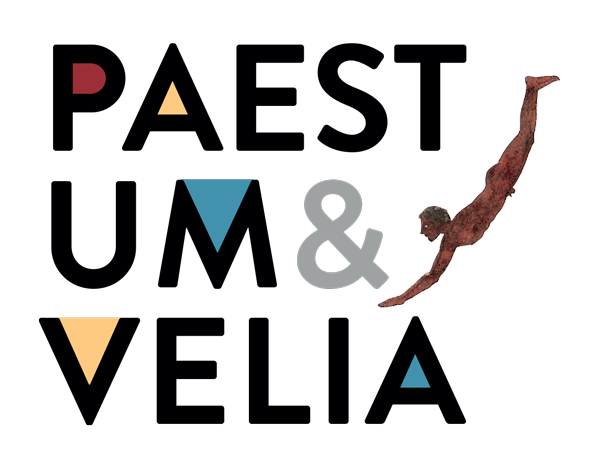 Fifty companions followed Jason on a quest for the golden fleece. Their ship was the Argo and they were called the Argonauts. They conquered the fleece, in faraway Colchis on the Black sea, but their return voyage to Greece was long-winded. They sailed along rivers – the Danube, the Po, the Rhône – and then down Italy’s Tyrrhenian coast. They stopped at the mouth of the Sele and dedicated a sanctuary to the goddess protecting their journey, Hera, the spouse of Zeus, father of the gods. Argive Hera, specifically, Hera of Argo. From that sanctuary she has protected seafarers for centuries, while, in her capacity as mother of the gods, she has blessed weddings and the prosperity of nature and men. But above all she marked an important boundary, that between the Greek people of Poseidonia, south of the river (the ancient city is only 9 kilometres from the sanctuary), and the Etruscans in the north. A place of separation, therefore, but also and above all its opposite, a place of economic and cultural exchanges between the two peoples. Sanctioned and governed by Hera.
Fifty companions followed Jason on a quest for the golden fleece. Their ship was the Argo and they were called the Argonauts. They conquered the fleece, in faraway Colchis on the Black sea, but their return voyage to Greece was long-winded. They sailed along rivers – the Danube, the Po, the Rhône – and then down Italy’s Tyrrhenian coast. They stopped at the mouth of the Sele and dedicated a sanctuary to the goddess protecting their journey, Hera, the spouse of Zeus, father of the gods. Argive Hera, specifically, Hera of Argo. From that sanctuary she has protected seafarers for centuries, while, in her capacity as mother of the gods, she has blessed weddings and the prosperity of nature and men. But above all she marked an important boundary, that between the Greek people of Poseidonia, south of the river (the ancient city is only 9 kilometres from the sanctuary), and the Etruscans in the north. A place of separation, therefore, but also and above all its opposite, a place of economic and cultural exchanges between the two peoples. Sanctioned and governed by Hera.
We knew of the existence of the Sanctuary from the ancient texts, but it was thanks to the intuition of the archaeologist Paola Zancani Montuoro that it was identified in the 1930s, among the marshes of the Sele, and excavated by Zancani Montuoro together with Umberto Zanotti Bianco. They discovered the beautiful metopes (sculpted stone panels) that welcome visitors to the Paestum Museum today: they were sculpted around 570 BC, a few decades after the establishment of the sanctuary, but the traces of the building they belonged to have been lost. Subsequent excavations also unearthed other metopes with pairs of dancing girls that decorated a building dating back to the end of the 6th century. The last important constructions date back to the end of the 4th century, but the sanctuary continued prospering during the Roman age, as well.
While the metopes and many items found in the Sanctuary are now held in the Paestum Museum, there is a very special museum along the Sele river today: a “talking” museum. It is an old restored farmhouse where panels, videos, installations and 3D reconstructions tell the story of the discovery of the temple, its events and devotion. Visitors will discover, for example, that the ancient rite is very similar to the present-day devotion to the Madonna del Granato: the pagan deity and the Mother of Christians have the pomegranate and the decorated procession boat in common. A dark shed holds the most beautiful spectacle: all the myths depicted on the metopes of the sanctuary – the stories of Heracles, of the Argonauts, of the Trojan war – light up and unfold. It is a total and spectacular immersion in ancient myth.
THE MUSEUM IS CURRENTLY CLOSED TO THE PUBLIC.











